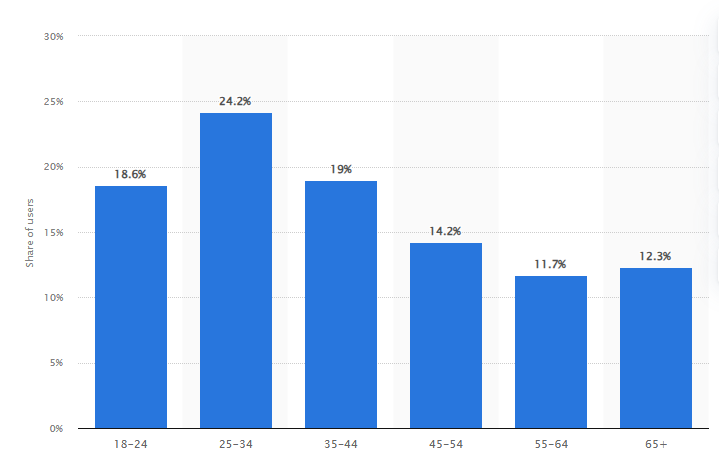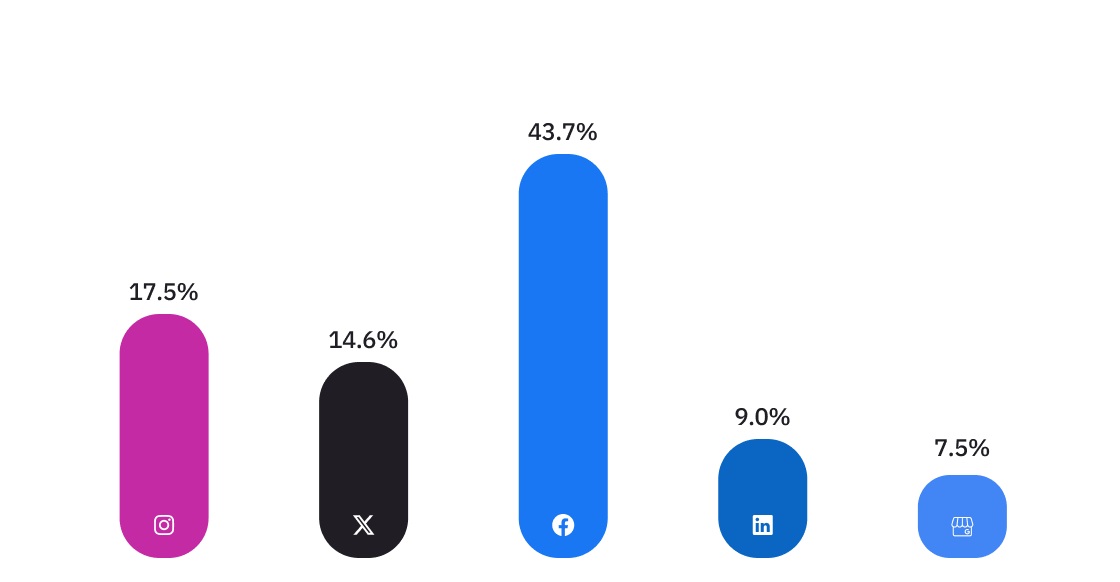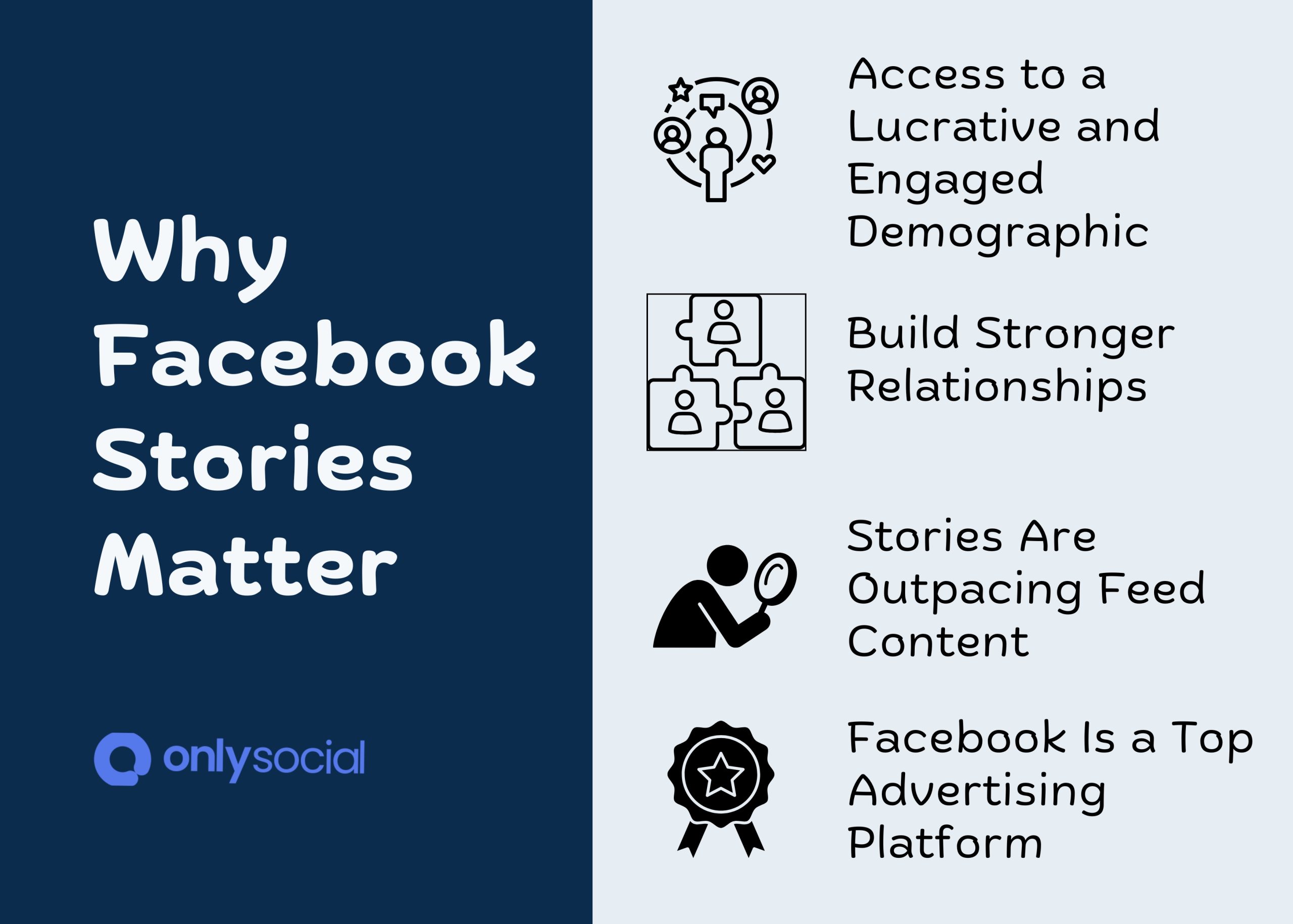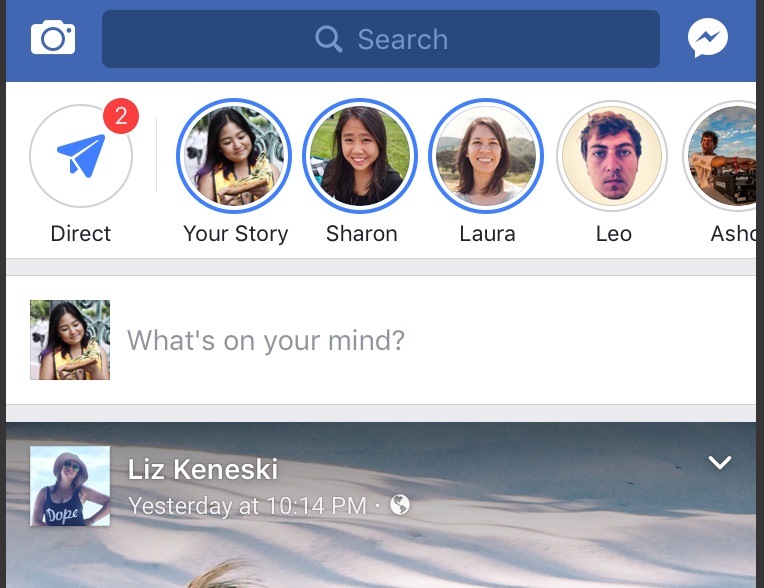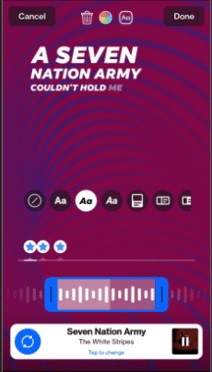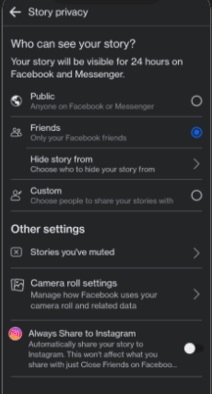Why Facebook Stories Matter and How You Can Use Them
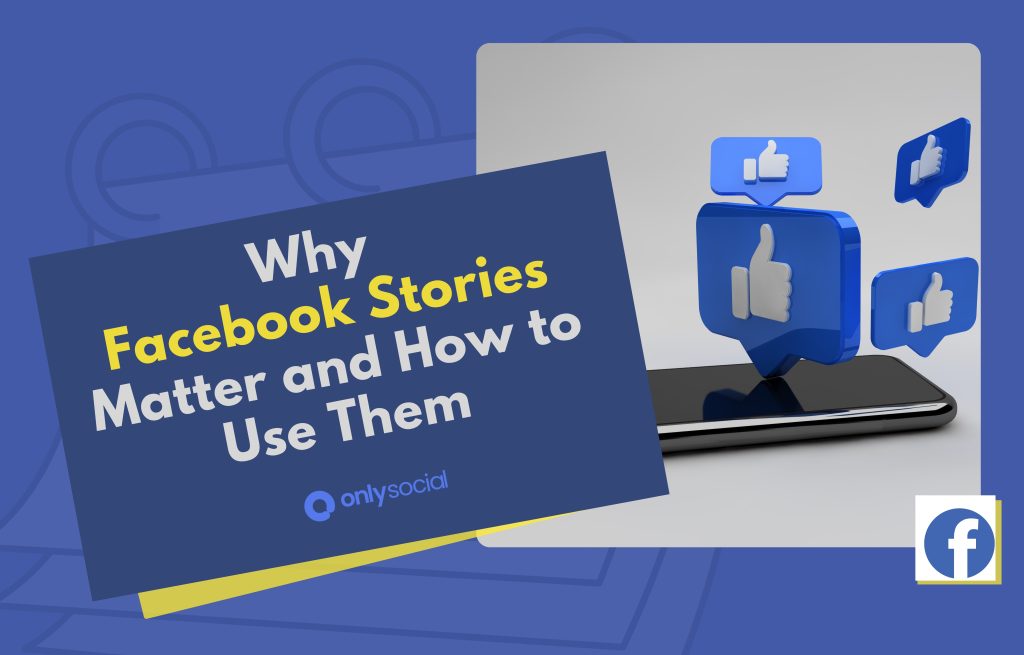
With newer platforms like TikTok gaining popularity, it’s easy to assume that Facebook isn’t as important for marketing anymore. But that couldn’t be further from the truth.
While it’s true that Gen Z is more active elsewhere, Facebook is far from being outdated. In fact, it’s still one of the most powerful tools for social media marketing, especially when it comes to Facebook Stories.
Take the US, for example: 53% of the population uses Facebook daily, and the largest group of active users is the 25 to 34-year-old age range, with over 60 million people in this bracket. This group isn’t just scrolling – they have real buying power, making Facebook a great place to reach your audience.
While organic reach on the Facebook feed has diminished, Facebook Stories are becoming increasingly important because they allow you to engage with your audience in a more personal and interactive way.
So, in this guide, we’ll break down what Facebook Stories are, why you should be using them, and how to make the most of them to grow your business.
Table of Contents
What Are Facebook Stories?
Facebook Stories, launched in 2017, were introduced as a response to Snapchat’s popular story feature. These stories are short-lived images or videos that appear for just 24 hours before they disappear.
They offer a fun, engaging way to share moments with your audience without clogging up your regular feed.
Unlike feed posts, which can get buried as more content is shared, Facebook Stories appear at the top of the user’s feed, making them one of the first things people see when they log in.
With over a billion stories posted daily across various platforms, stories are one of the most viewed types of content on social media today.
Facebook even allows sponsored stories. That means businesses can run targeted ads through the Stories feature. This gives them the chance to reach specific audiences and extend their content’s visibility in a more dynamic, engaging format.
Types of Facebook Stories
You can create Facebook Stories using the in-app camera or upload content you’ve already made. Once your content is ready, you can edit it with fun features like stickers, GIFs, polls, questions, locations, and even music.
These interactive elements are great ways to engage your audience and add personality to your stories.
There are basically two types of Facebook Stories:
- Images: Facebook Story images are shown for 5 seconds, making them quick and attention-grabbing.
- Videos: Videos in Facebook Stories can last anywhere from 1 second to 120 seconds, offering a bit more flexibility in how you engage your audience.
Why Facebook Stories Matter
While Facebook may not be the go-to platform for younger generations, it remains a powerhouse for reaching certain demographics, especially those with strong purchasing power.
As more businesses explore various ways to connect with their audience, Facebook Stories stand out as a tool that can help you achieve engagement and foster meaningful relationships with your target market.
Let’s take a look at some key reasons why Facebook Stories should be an essential part of your strategy.
1. It Helps You Connect with a Lucrative and Engaged Demographic
While platforms like TikTok dominate with Gen Z, Facebook continues to shine with its 25 to 34-year-old user base, which makes up a significant portion of the world’s online shoppers.
67% of millennials prefer shopping online, and they are highly active on Facebook, often using it to discover products.
56% of Facebook users follow brands to stay updated on their products, and nearly three-quarters of online shoppers rely on social media to guide their purchasing decisions.
Facebook Stories provide businesses with a direct link to this valuable group of consumers. By leveraging stories, you can reach and engage with one of the most lucrative demographics online. Ultimately, this means more traffic and sales for your business.
2. Build Stronger Relationships with Your Audience
Building emotional connections with consumers is more important than ever, and Facebook Stories offer a unique opportunity to do just that.
65% of consumers report feeling emotionally connected to a brand, and millennials and Gen X are particularly likely to form these bonds. According to Harvard Business Review, emotionally engaged customers are more loyal, less sensitive to price changes, and are willing to spend more, sometimes up to 50% more—on products they feel connected to.
With Facebook Stories, you can give your audience closer access to your brand, humanizing it in ways that promote trust and loyalty. Whether it’s through behind-the-scenes looks, product demos, or user-generated content, you can foster stronger relationships with your followers.
This emotional connection leads to a loyal customer base, particularly within the millennial and Gen X groups, which can translate into long-term business success.
3. Stories Are Outpacing Feed Content
Organic reach on Facebook has become a real challenge for businesses, making it harder to ensure that your content is being seen by your audience. That’s where Facebook Stories come in – they are rapidly overtaking feed posts as one of the most effective ways to reach users.
Stories are positioned at the top of the feed, making them more visible and likely to capture attention.
What makes Stories even more compelling is their fun, casual nature. This is your chance to get creative and stand out. You can leverage trending hashtags, filters, or even interactive features like polls and questions to increase engagement.
4. Facebook Is a Top Advertising Platform
When it comes to advertising, Facebook remains one of the most powerful tools available to businesses, large and small. As the world’s largest social media platform, Facebook offers unrivaled access to a massive audience.
It’s also proven to have the highest conversion rate compared to other platforms. This means that users are more likely to take action after seeing ads.
One of the key reasons for this success is that many Facebook users actively engage with the platform for shopping, whether it’s browsing products, reading reviews, or discovering new brands.
For small businesses, this is a golden opportunity to showcase products, services, or even local events.
How to Create Facebook Stories
Creating Facebook Stories is quick, easy, and fun! With just a few taps, you can craft engaging content that connects with your audience.
Here’s a simple step-by-step guide to get started:
Download the Facebook App
To make the most of all the features, it’s best to post your stories via the Facebook mobile app. While you can technically post from your desktop, the mobile version offers full functionality, including editing and creative tools.
Once you’ve downloaded the app and logged into your account, look for the + button at the top of your feed, and choose Story.
Choose Your Story Format
You have a few creative options when it comes to creating your story:
- From Scratch: Start with a clean slate using text, music, or even a boomerang effect. It’s all up to you!
- Media from Your Album: Select photos or videos from your phone’s gallery to feature in your story. If you want to take a quick snap or record a video on the spot, just tap the camera icon at the bottom of the screen.
Add Music to Your Story
Want to make your story stand out? Add some music! You can choose from trending tracks and either display the lyrics on screen or just let the music play in the background. Using popular songs can help boost the reach of your story, especially if they’re trending.
Customize with Text
If you want to get creative with words, the Text Story format is perfect for you. Customize your message with a variety of fonts, backgrounds, and colors. You can even use an image or video from your library as the backdrop for your text.
Edit and Enhance Your Content
Once your image or video is ready, it’s time to make it pop with Facebook’s editing tools. Add stickers, GIFs, text, or even music to personalize your story.
You can also draw on your content, add effects, and include features like location tags, weather details, or time stamps.
If you have a special event, a charity link, or a website to share, you can also add a call-to-action button. This makes it easy for your audience to engage with your story and take the next step.
Before you hit Publish, make sure to adjust your privacy settings. Facebook lets you decide who sees your story:
- You can share it with Close Friends only or create a custom list of viewers.
- If you want everyone to see it, set the story to Public.
Once you’re happy with your content and privacy settings, hit the “Your Story” button, and your story will go live!
Track Your Story’s Performance
After your story is published, you can monitor its performance using Facebook’s Analytics tools. This allows you to see how well your story is engaging your audience and whether it’s driving the results you’re looking for.
With these simple steps, you’ll be able to create, share, and track impactful Facebook Stories that resonate with your followers!
Schedule to Get the Most Out of Facebook Stories
If you’re looking to get the most out of your Facebook Stories, scheduling is one of the smartest strategies you can use.
Timing plays a huge role in the success of your content, and scheduling your stories ensures that they go live at the perfect moment – when your audience is most likely to engage.
We can all agree that posting manually can be time-consuming, and it’s easy to miss the optimal times to reach your audience. Plus, consistency is key to maintaining engagement, and without a scheduling plan, it can be hard to keep your posts steady and well-timed.
Scheduling your Facebook Stories also frees up time for you to focus on creating quality content rather than stressing over the timing of your posts.
So, if you have not been scheduling your social media posts, it’s time you start considering that. So, how do you do that?
There are basically two ways to schedule your Facebook Stories:
Meta Business Suite
You can schedule Facebook Stories directly from the Meta Business Suite, which offers a simple way to schedule posts for your Facebook and Instagram accounts.
It’s great if you’re looking for a basic tool that gets the job done with ease. You can set the time for your stories and forget about them until they go live.
Third-Party Social Media Management Tools
While Meta Business Suite provides a level of convenience, using a third-party social media management tool like OnlySocial gives you more flexibility and functionality.
With OnlySocial, you can manage multiple accounts from a single dashboard, schedule content across different platforms, and access advanced features like content calendars, bulk scheduling, and detailed analytics.
This allows you to have a more strategic, streamlined approach to scheduling your Facebook Stories and other social media content.
Final Note
Facebook Stories are a powerful tool for engaging with your audience, and by using the right scheduling strategy, you can ensure that your content reaches the right people at the perfect moment.
Whether you’re using Meta Business Suite for basic scheduling or taking advantage of the extra features with OnlySocial, planning ahead makes a significant difference in boosting your engagement and maintaining consistency.
Now that you understand the importance of Facebook Stories and how scheduling can enhance your strategy, it’s time to get started. This will go a long way in helping you unlock the full potential of Facebook Stories and build stronger connections with your audience.
FAQs
Can I schedule the same story to Facebook and Instagram at the same time?
Yes, you can! If you use a tool like OnlySocial, you can schedule the same story to both Facebook and Instagram at the same time. This saves time and ensures your content reaches your audience across multiple platforms simultaneously.
Can I edit scheduled Facebook stories?
Once a Facebook story is scheduled, it cannot be directly edited in the platform itself. However, you can delete the scheduled story and re-upload a new version with the changes you want. If you’re using a tool like OnlySocial, you can edit the scheduled content before it’s published to make any necessary tweaks.
What is the best time to post stories on Facebook?
The best time to post on Facebook Stories is generally between 8 PM and 11 PM (Monday to Friday) and 8 AM to 11 AM on weekends. These time windows see the highest engagement as people are more likely to interact with content during their downtime, whether winding down after work or starting their weekend.
How many stories should I post daily?
While there’s no one-size-fits-all answer, posting 1-3 stories per day is a good rule of thumb. This ensures you stay visible without overwhelming your audience.
Focus on quality over quantity. Make each story meaningful and engaging to keep your followers interested and coming back for more.
